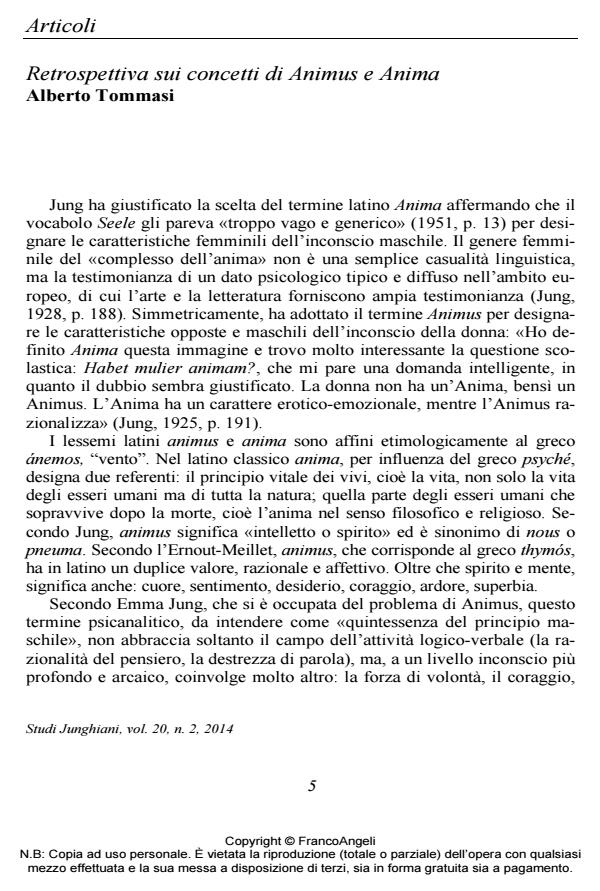Retrospective on animus and anima
Journal title STUDI JUNGHIANI
Author/s
Publishing Year 2015 Issue 2014/40
Language Italian Pages 17 P. 5-21 File size 74 KB
DOI 10.3280/JUN2014-040001
DOI is like a bar code for intellectual property: to have more infomation
click here
Below, you can see the article first page
If you want to buy this article in PDF format, you can do it, following the instructions to buy download credits

FrancoAngeli is member of Publishers International Linking Association, Inc (PILA), a not-for-profit association which run the CrossRef service enabling links to and from online scholarly content.
This work first outlines the basic theory of C.G. Jung on animus and anima. Furthermoreit suggests considering the instance of persona, in which field the gender models of collectiveculture assume normative character. The author then particularly analyses the problemof animus as a mediator between consciousness and the unconscious by comparing Jungiantheory with E. Jung, J. Hillman and E. Neumann. He creates a scheme showing that the consciousnessof woman is currently relying on a double identity, both feminine and masculine,with the coexistence of animus and anima in the unconscious. A crucial point of the basictheory is the complementarity of soul-image and persona, which implies that a historicalvariation of the second instance causes a modification also in the first one. The decrease ingender differences on a conscious level could have modified the compensatory drive of theunconscious. In Jung’s age, this had a decisive contrasexual character while nowadays manyanalytical psychologists recognize the coexistence of archetypes of the feminine and masculinein the collective unconscious of both sex individuals.
Keywords: C.G. Jung, J. Hillman, animus, anima, persona, gender models
, Retrospettiva sui concetti di Animus e Anima in "STUDI JUNGHIANI" 40/2014, pp 5-21, DOI: 10.3280/JUN2014-040001